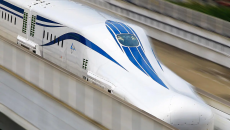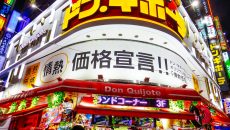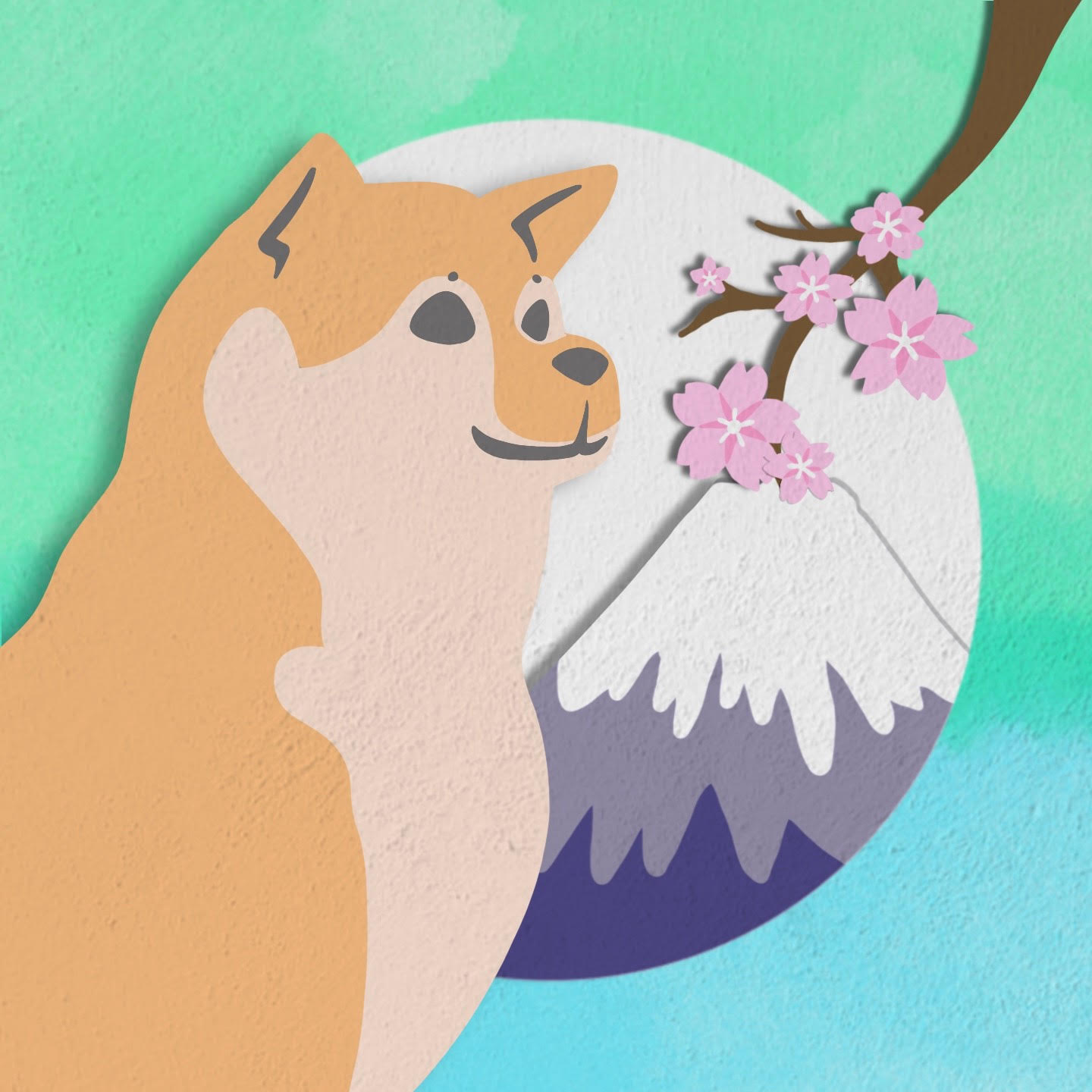Retiring to the Japanese countryside.
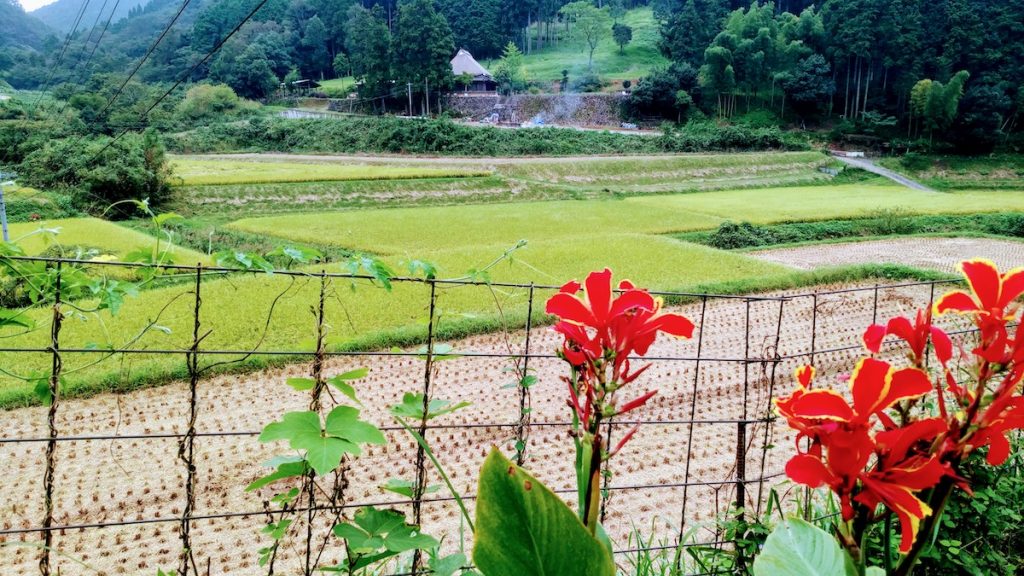
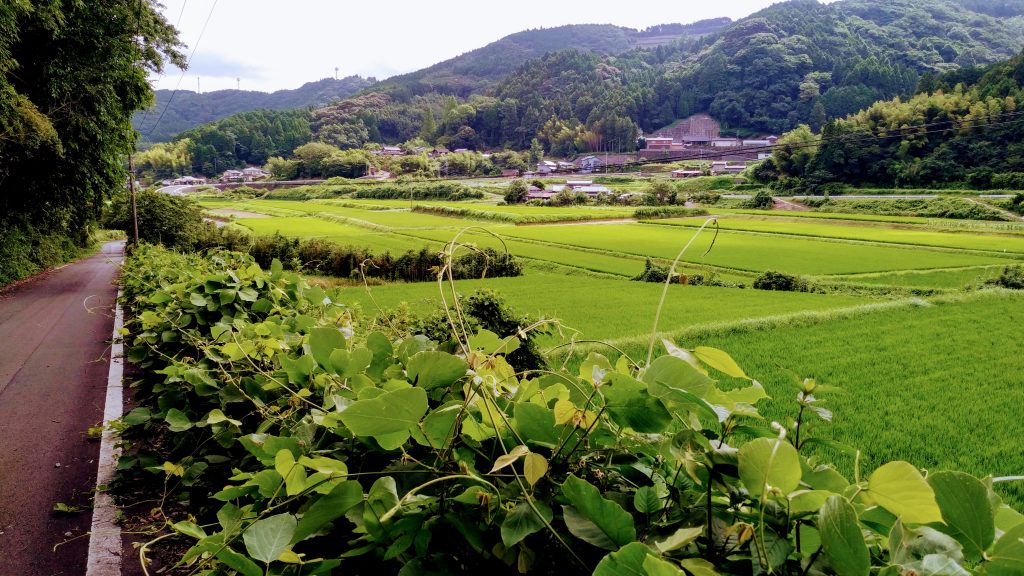
Although we used to live in a neighborhood in the middle of Tokyo, upon becoming semi-retired last summer, my wife and I moved to an abandoned farmhouse in rural Kyushu. We now routinely find ourselves literally driving down real country roads and unconsciously belting out the lyrics of John Denver’s famous “Take Me Home, Country Roads.” Instead, however, of finishing the signature line with “where I belong, West Virginia,” we jokingly substitute the location to “Kunisaki Hanto,” our new home on the Kunisaki Penninsula of Oita Prefecture. It probably sounds funny to anyone who may hear us as we drive by, but we feel very welcome in this gorgeous area and are proud to call it our new home! …but what led us to this ancient part of Japan?

My wife and I had started thinking about where we may want to retire a few years ago, but until earlier this year, that prospect had always seemed fairly far off in the future. Thus our plans had been murky at best. We are a cross-border family. I am from the U.S, and my wife is a native of Japan. We had moved back-and-forth between Tokyo and Chicago three times and had been living in Nakameguro in central Tokyo for the past six years when I reached a crossroads in my career and contemplated yet another relocation assignment back in the U.S. once our youngest son graduated from high school. For a variety of reasons, we decided to take a step back and consider whether this was, in fact, the right time to make such a move or perhaps should we consider an even more radical life change that could also include retirement. Mainly because our family is now spread out around the world, we concluded that a compromise would be necessary no matter where we ended up. Thus, we accepted a degree of give-and-take while we balanced the pros and cons of each option.
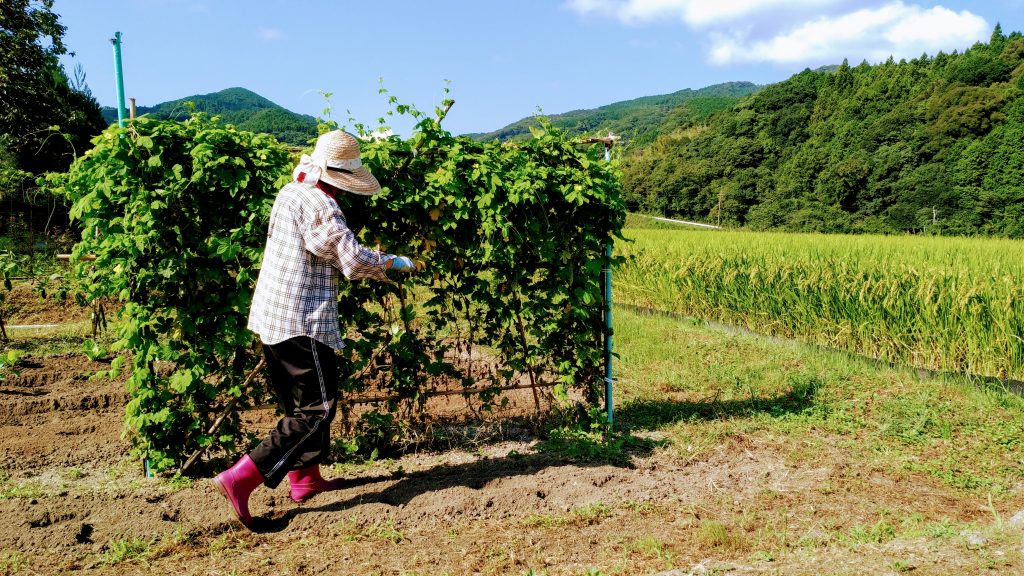
In the beginning, there were, of course, several practical issues to consider. Is the timing, right? Would we have enough financial resources to last us for the rest of our lives if I were to become semi-retired now? Where would we live? What about healthcare? Legal status? And on and on…
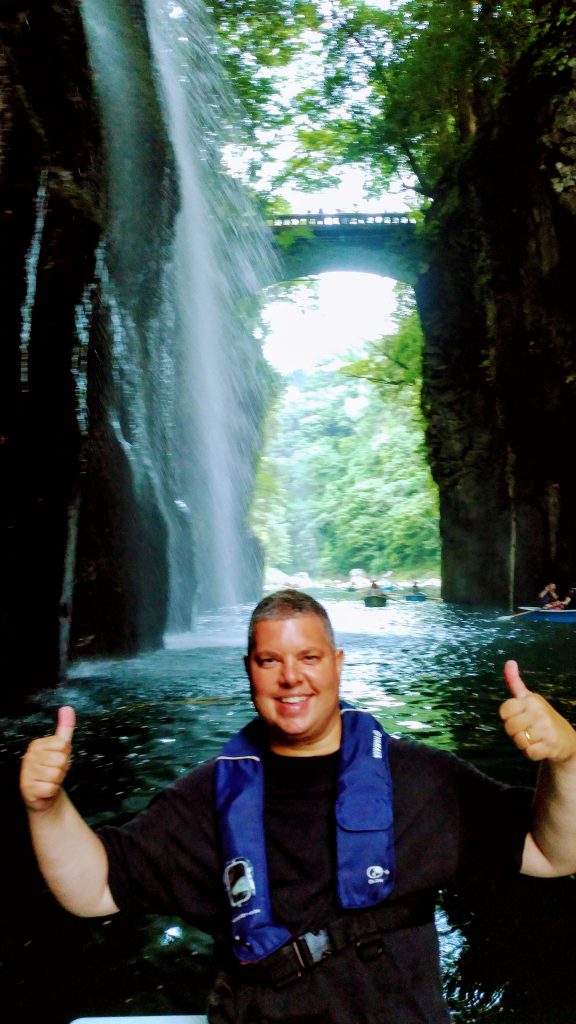
Because I was only just 50 years old at the time it seemed a little early to consider seriously the prospect of retiring early. After a successful, thirty-year career in the business world including the last 27 years at the same firm where I had recently been requested to do another stint back at the head office in my native Chicago, I could have easily taken the expected route of simply returning “home.” Especially for an American, this was a very long time to have spent working at a single firm, although I certainly enjoyed working closely with many customers from around the world, including many who had become good friends and, naturally, the comradery of my former fellow colleagues. There was, however, something in the recesses of my mind that was gnawing at me to take this opportunity to head in a different direction. Perhaps now was, in fact, the time to take the proverbial “road less taken” and become a truly permanent resident of Japan.
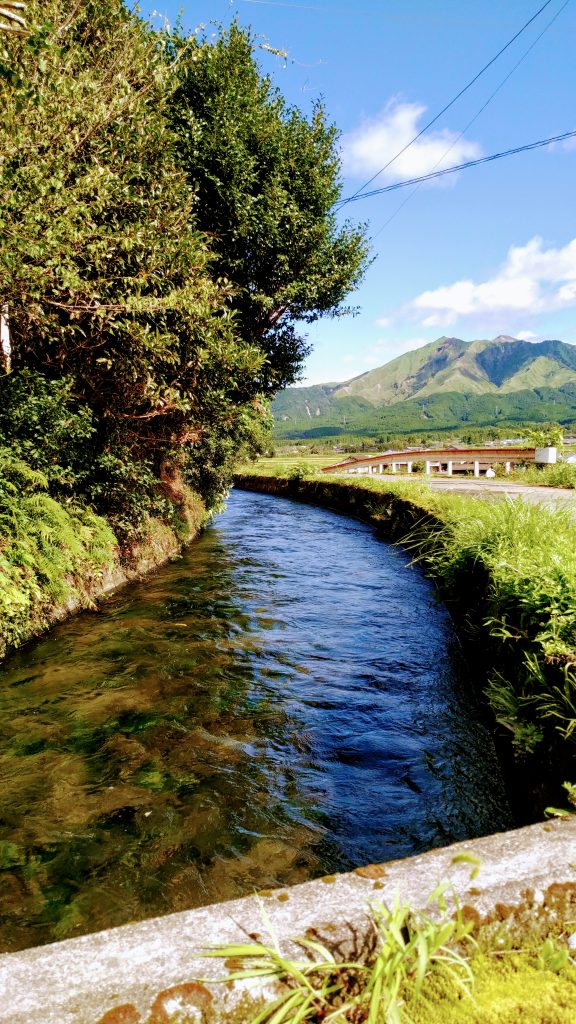
With such a momentous decision before us, first, my wife and I had to make a candid assessment of whether we could afford to have me retire so young, assuming that I would need to retire from my long-time employer if we were to remain in Japan. This was a difficult question to answer on our own, and, as a result, we sought guidance from a knowledgeable financial advisor that specializes in helping cross-border families around the world. After doing the math, I became a somewhat reluctant member of the “FIRE” (“Financial Independence Retire Early”) movement, which is now all the rage throughout the news media. The freedom necessary even to consider the potential to retire early is predicated on financial independence. This is based upon prudent consideration of both how much is coming in and how much is going out at present and for the rest of one’s life. While my wife and I are solidly middle class, since getting married, we had lived comfortably yet frugally and had been able to salt away a good portion of our earnings year after year. Especially once we started to consider the option of moving to more of a rural setting, the potential for significantly reducing our cost of living helped to tip the scales toward retiring early. As we investigated further, we learned that many local governments in Japan that are eager for newcomers—even older ones–often provide a number of incentives to lessen the financial cost of relocating to the countryside. One such incentive was assistance to find an abandoned home to rent at a very reasonable fee. Japan is, as has been widely reported in the media, full of such houses, and the owners of such properties are eager to have virtually anyone live there to ensure that the home does not fall into ruin. With help from the city government in the village which seemed like an excellent place to relocate, we were able to narrow our search and find a suitable property that was almost in move-in condition.
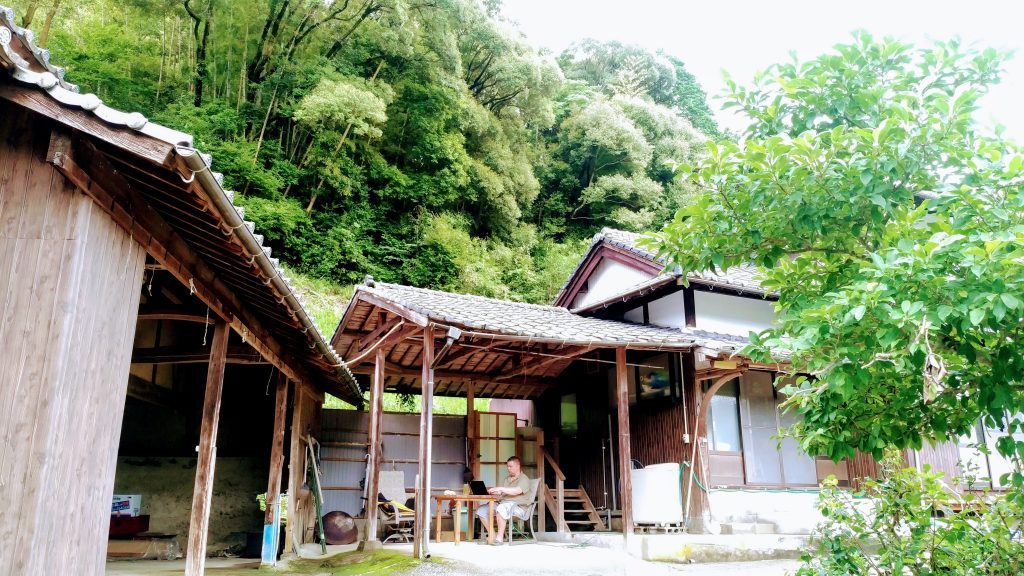
The decision on timing could not, however, be based solely on short-term expenses like rent. Our financial adviser helped us to reach the final decision by taking an extremely conservative approach based upon the projected future value of investments and our spending habits. He threw in various curveballs to simulate the effect of potential downturns in the stock market, unexpected expenses, adjustments to our risk profile, etc. When all was said and done, we felt comfortable with the analysis that indicated that yes, indeed, it would be possible to make FIRE a reality.

Our next big decision was to determine where should we live. Should we remain in Japan, return to the U.S. or move to a third country? The location of parents, children, and other family members is often a key consideration with this type of decision. Like the situation faced by many cross-border families, there is no ideal solution to this dilemma. A commitment to travel periodically to see family members from time to time is simply a fact of life for families like ours. Thus at the very least, we were able to narrow the search down to either Japan or the U.S. at that point.
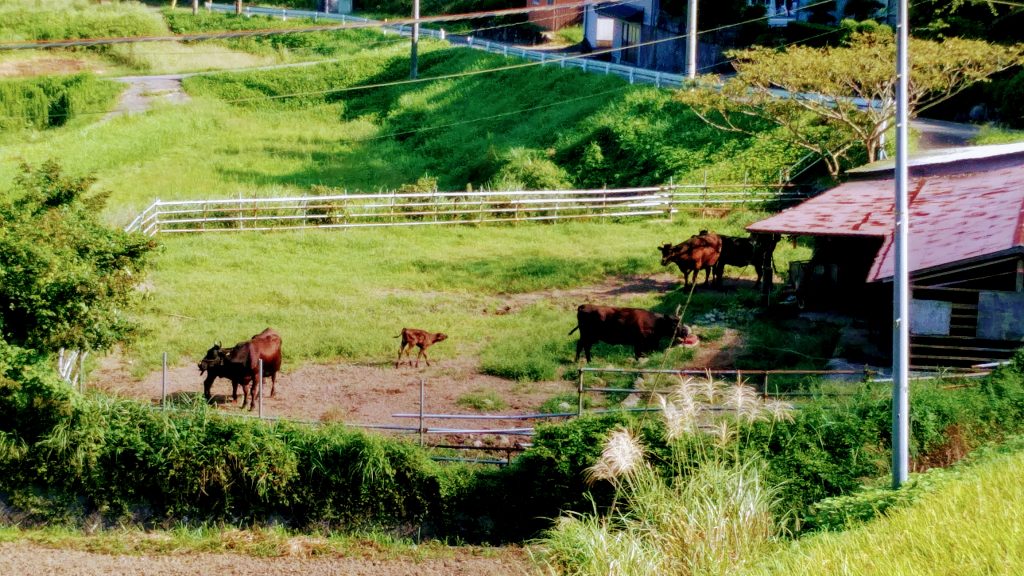
What about healthcare?
One factor that essentially sealed the deal for us was healthcare. Japan’s system of socialized medicine may have room for improvement, but, when compared to the high cost of healthcare in the U.S. especially for those too young to qualify for government-subsidized Medicare, Japan’s Kokumin Kenko Hoken or nationalized health insurance plan seems pretty effective for people trying to live the FIRE dream. Damn! That meant that Hawaii was out! (Although we were never really serious about it, there was a time when we considered moving to Oahu’s west coast. It seemed like the perfect compromise to allow our families “to meet in the middle.” Such a move probably would have, however, been too expensive in the long-run, and Hawaii would have been too remotely located for frequent visits by family members.)
Legal status?
We also had to consider legal status. After almost 20 years of studying and working in Japan, it was not an issue for me to remain there. This question would have, though, been an additional challenge for my wife to regain legal status in the U.S, particularly given the tighter restrictions on legal immigration that have been imposed since the current administration gained power. Another check in the box for Japan!
At the end of the day…
The ultimate decision came down to where the two of us would be most comfortable and what we valued most. Upon deep reflection of my life-long affection toward my adopted “home” of Japan, the prospect of remaining in Japan was, in fact, a natural choice. When I started to study Japanese as a first-year college student many years ago, I did not contemplate the possibility of spending almost half of my life in Japan, let alone being in a position to make the ultimate commitment of retiring there. To this point, I had invested nearly 40% of my life in Japan, and I had already promised my wife several years ago that we would not be moving back to the States again. My wife and I had been fortunate to experience first-hand life in each other’s country, but now she wanted to remain close to her family in Japan. She was, reasonably enough, not all that interested to move back to Chicago for the third time and face its freezing winters. Thus upon reflection of our family situation, what my wife and I found most satisfying, the welcome, intellectual challenge for me of living in a foreign country—especially one so different from my own–and, of course, practical considerations, I know that it was the right choice to remain in Japan.
Japan it is! …but where in Japan?
Okay, that was settled. Next, we had to consider where in Japan to live. In the West, it is relatively common for North American retirees—including those that can retire relatively early—to relocate from large cities in the north to warmer climates in the south such as Florida, Southern California or Arizona and for European retirees to head down to the Mediterranean. Even if they have the financial means to do so, most Japanese retirees do not follow this practice and tend to stay put. While there certainly are exceptions, it seems as though the ideal post-retirement environment for many urban Japanese is a relatively large, modern condominium (“tower mansion”) either directly above or within walking distance of a major train station in the same big city where they have been working for most of their lives. The reasons often cited include “convenience,” “proximity to children,” “ready access to medical care,” and “no need to rely upon one’s vehicle for local transportation.” To each his own, but after spending approximately 30 years in major metropolitan centers, I knew that I wanted, ultimately, to escape to a completely different, more natural environment. My wife and I wanted to relocate to someplace with a slower pace of life surrounded by nature that certainly did not involve having to shovel a driveway after a snow storm!
You need to do your homework…
We were looking for a rural setting toward the southwestern part of the country. At first, we went the extreme route by checking out Okinawa and Amami Oshima. Both locations are magnificent and may have turned out to be appropriate venues for our new home, but we concluded that both were just a little too far removed from the mainland. Both spots are, moreover, directly in the line of a series of annual typhoons. While there are beautiful, relatively untouched sections of the main island of Okinawa, it is, in general, too built-up for our taste, and there is, of course, the unresolved issue of the U.S. military bases. We made three trips to Amami Oshima and seriously considered this option, primarily due to its lush greenery, gorgeous beaches, and ultra-clear, “cobalt blue” water. As with many tropical destinations, though, it rains a lot there. Thus we decided that both of these areas would continue to be great places to visit but were just a little bit too far removed from the rest of Japan for our liking.
“Go west, young man” (meaning West Japan in this case)
As I had spent a year in graduate school in Fukuoka on a grant from the U.S. government many years ago and had the opportunity to visit many parts of Kyushu during business trips during the past 30 years, we then started to consider somewhere in Japan’s southern main island as a distinct possibility. We narrowed our target to Kyushu, given its wonderful people, its relatively warm climate and beautiful scenery, delicious food, and other practical considerations—in that order of importance. Given my lifelong interest in marine sports and our mutual desire to go hiking frequently, my wife and I prioritized finding somewhere near both the sea and mountains. As another mutual interest is visiting hot springs (onsen in Japanese), it was only natural that we ended up choosing the prefecture in Japan with the highest number of such natural spas, Oita-ken.
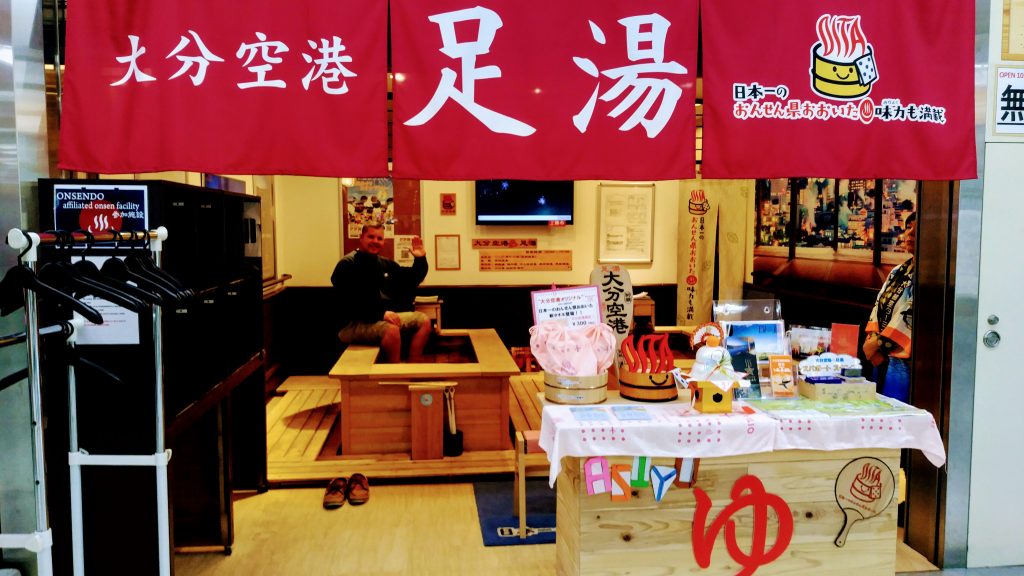
During all of my years in Japan, I have found that Japanese people are, in general, very friendly and open to newcomers. While this holds throughout the country, I have always sensed a real congeniality in the countryside outside the big cities—especially in Kyushu. Since moving to a small village in Oita, this belief has only been proven true many times over. Almost immediately upon arrival, we were asked to volunteer on a Sunday morning to help our neighborhood association clip the grass that overgrows along the mountain roads in our village. While we were told that there was no obligation to do so, we, of course, enthusiastically committed our support. Well, this turned out to be a real ice-breaker and a great way of getting to know our neighbors, most of whom are farmers. We have continued to volunteer for such work and have subsequently been rewarded with new friendships, local tips on where to visit, and lots of home-grown vegetables! I also ventured down to the city beach one day and was quickly adopted by a small community of avid windsurfers, including two nationally ranked pros who eagerly lend their advice on how to improve one’s sailing skills. I had a similar experience with windsurfing on Mitoma Beach near Fukuoka when I was a graduate student at Kyushu University three decades ago. Thus if you show a little initiative to get involved in some local activity, then it is highly likely that you will be wholeheartedly welcomed into a new circle of friends down in Kyushu.
If you like hot springs, then this is the place!
My wife and I have also been particularly pleased to experience how proud the people of Oita are about their own home—beginning with the hot springs. Given the sheer number of such places in this part of the country, the people of Oita are certainly entitled to boasting rights when it comes to hot springs. We routinely meet local “experts” on onsen who are more than willing to share their knowledge of the particular components of the water quality, mineral content, etc. If you’re into the details, it is possible to pinpoint precisely the right onsen to your liking. We have tried onsen on both ends of the pH spectrum, including the famous Tsukahara Onsen Kako-no-Yu, which is adjacent to a large steam vent from the volcano located directly underneath its spa. It is, apparently, one of the most acidic onsens in Japan with a pH of only 1.5, which makes it taste like lemon juice, and this onsen has the highest content of ferrous ion out of all of the many thousands of hot springs across the country. Locals from Beppu routinely go there to fill empty bottles with the healing water, which they maintain helps to promote beautiful skin. Many of these places cost less than 300 yen, and some are even free. Every long-term resident has their favorite onsen, and they are, in general, not shy about sharing this precious knowledge. You just have to ask. Many locals visit their local onsen every day and swear that it is like a fountain of youth. There may be some truth to this belief, as it certainly seems like a lot of older people in Oita are in great shape! To keep track of all of the various hot springs that we have sampled thus far, we started a scrapbook to store brochures from each location. Before long, though, we ran out of pages, as there are literally thousands of hot springs here!
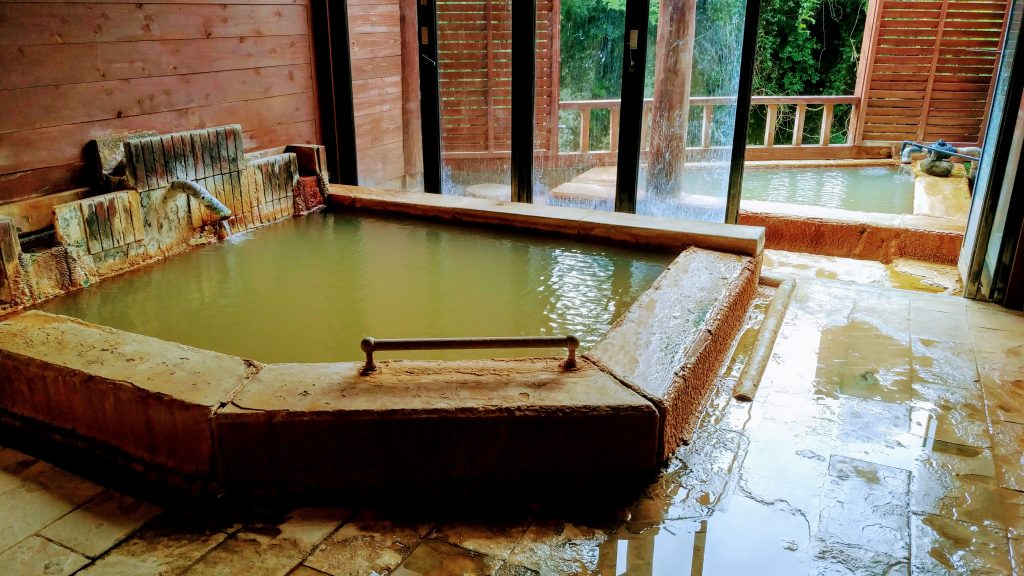
The feeling of local pride runs much deeper than just onsen. The part of Oita to which we moved is called the Kunisaki Hanto and has a well-documented history of more than 1,300 years. It is studded with numerous temples and shrines. There are lots of locally produced television shows about what is going on throughout the prefecture, and there is a strong sense of local pride in the many events and local rituals that have been practiced here for so long. While some are rightfully concerned about the long-term population declines, we can sense a strong undercurrent of resiliency that is no doubt helping to support this vibrant part of the country.
The “real Japan” can be found in the countryside…
Yes, it’s hot and humid in Oita in the summer, but unlike the oppressive heat that remains trapped by the concrete jungles of Japan’s big cities, the heat dissipates in the evening. The natural beauty of Oita is stunning throughout the year. We arrived last summer and were pleased to discover sandy beaches, verdant mountain trails, and, of course, the ever-present onsen. The water of the Seto-nai-kai is relatively clean and teeming with all sorts of varieties of fish and shellfish. We have climbed Mount Yufudake in between Beppu and Yufuin that has a view that is right out of a fairy tale. During autumn, we have been awed at the beauty of the mountain passes of Kuju and the fall foliage of the Yabakei Ravine. We settled in a small town called Kitsuki, which is home to the most miniature castle in the country. It features a quaint section of town that looks like it is from the Edo Period. I am, moreover, only mentioning a few highlights!
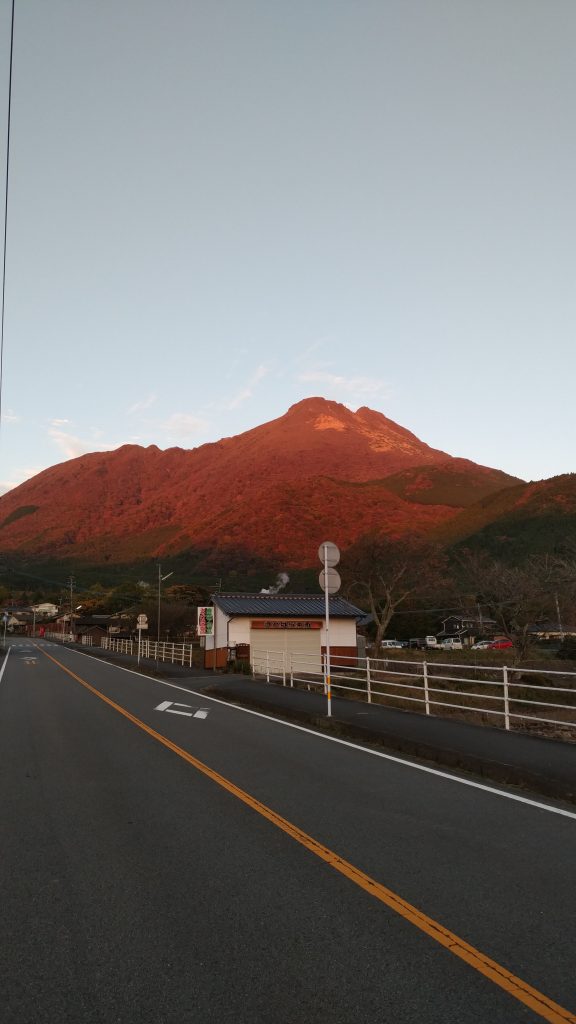
Before moving to Oita, we knew that its seafood would not disappoint, and it certainly has not. The locally caught fish and shellfish are of exceptionally high quality and are surprisingly reasonably priced. We found a local fish market where fishermen sell their catch five days a week. Members of the general public can go to buy this fresh seafood directly from wholesalers who have purchased the day’s catch directly from fishermen only minutes beforehand. While it is certainly fun to attempt to barter down by the dock, locally caught seafood is also widely available at area supermarkets. Oita is, in particular, famous for oysters, octopus, and fugu, but there is so much more. Many of the fish look similar to varieties available in other parts of the country, but they have different names down here. We are still trying to learn the local nomenclature!
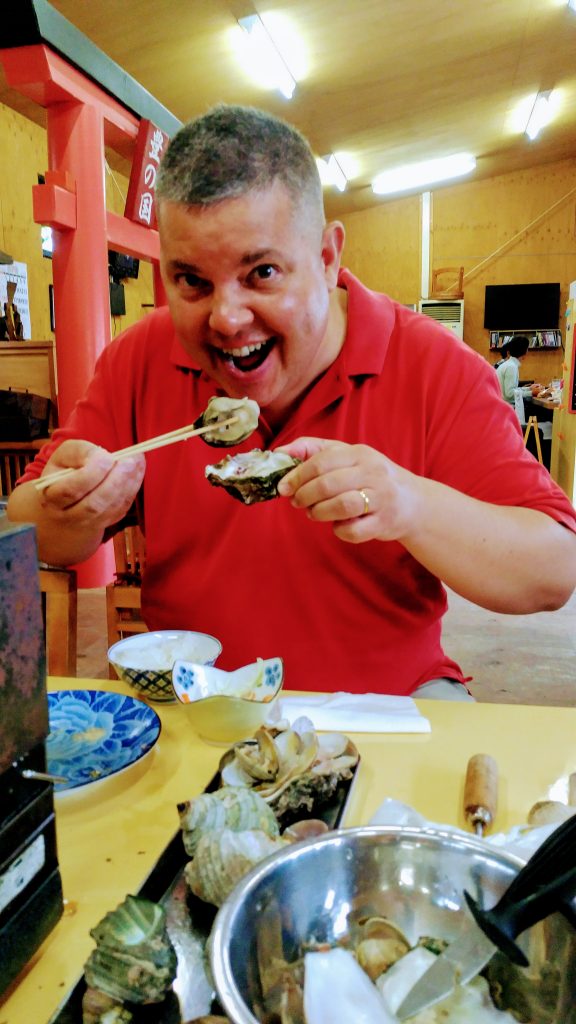
The fruits and vegetables are grown in Kunisaki Hanto—including many from our garden–are also really fresh. The most famous fruit from this part of Japan is, of course, kabosu, which is a cross between a lemon and lime. Although most Japanese people recognize kabosu as a tasty, somewhat exotic, and hard-to-find fruit that complements a meal when a little slice is squeezed over grilled fish, we have learned that kabosu goes well with just about everything. We know this from first-hand experience because we have had to find something to do with the excess from the relatively small kabosu tree in our front yard, which has yielded a bumper crop this year — armed with an extension pruner my wife and I have learned how to pick fruit from even the highest branches at breakneck speed. Using these pruners is quite addictive, although it always seems like no matter how many kabosu you pick, there are always many more left on the tree! Even after sending multiple boxes of fruit to friends and family throughout the country, we are still trying to find enough space in our freezer to store all of the kabosu juice that I have squeezed. At this point, I am reasonably confident that I have developed carpal tunnel syndrome from squeezing so many kabosu! Kitsuki is also famous for mandarine oranges (mikan in Japanese), which have been a favorite of mine since childhood. You can buy fresh fruit and vegetables from numerous, unmanned farm stands along the rural roads, at farmer’s markets, or, of course, from the supermarket.

What is the deal with fried chicken down here? We have been surprised to learn that Oita is particularly famous for fried chicken or kara-age in Japanese. It also comes in the more traditional form of tori-ten, which is, essentially, chicken tempura. No matter how you prefer your fried chicken, it is available everywhere in Oita. There are pop-up stands, food trucks, chicken shacks, etc. dotted along every country bypass. There is even a highway called “Chicken Road!” Despite all of these options, our favorite place for kara-age is Hana-chan in Aki, which was recommended by a local. Their hand-painted billboard on Route 213 is not much to look at, but the scent of fried chicken is often more than enough to attract customers—almost all of whom become repeaters. The husband and wife team that run Hana-chan first ask what you want—meaning which part of the chicken you want-and only then do they start to deep fry your order to ensure that it comes out fresh. All the while, they will joke with you and tell you all about the area, upcoming neighborhood festivals, etc. Hana-chan ships over-night throughout the country, as many displaced Oita migrants often require a taste of back home. It is, however, ideal to visit Hana-chan directly!

Ritsumeikan Asia Pacific University adds a global touch to Oita!
Besides the friendly people, the breath-taking scenery and delicious food, an unexpected, additional draw to Oita is the presence of twenty-year-old Ritsumeikan Asia Pacific University in Beppu, which is known as “APU” around here. This university is composed of approximately 6,000 undergraduate and graduate students, more than half of whom are from outside Japan. The common language of instruction is English, and this university has all sorts of exchange programs with colleges and universities around the world. APU is helping to globalize Oita while providing its students from abroad with exposure to life in Japan outside of Tokyo, Osaka, and Nagoya. Many of their multi-lingual graduates are, I have heard, in high demand from Japanese employers. This university also routinely allows members of the general public to attend all sorts of seminars, presentations, etc. at little or no charge. This is one way that, as an American, I can maintain ties to the non-Japanese world only by making a short trip to APU’s impressive campus overlooking the city of Beppu. As APU’s reputation continues to spread, it will further help Oita to become a gateway from Japan to the rest of the world. The discovery of APU has genuinely been a pleasant surprise, which has only re-affirmed my choice to move to Oita.
I hope that this was inspiring…
Now that we have found a place to settle down and grow old, what’s next? Well, I am still too young to sit back and do nothing for the rest of my life. From our new base in Oita, my wife and I are looking forward to continuing to explore the rest of Kyushu and spending more time with each other. While we each need a certain degree of our own “alone” time, one of the most beautiful parts about becoming semi-retired is the opportunity it provides to reconnect with your spouse simply by having more time together. Lately, we have gotten into the habit of going swimming two or three times per week at the public pool in town, which is, by the way, fed entirely by the nearby onsen (with cooled water). We have found that exercising together is, in fact, a great way to get used to all of the extra time that we can now spend together. We have also become interested in hiking during our multiple excursions throughout Oita and in other parts of Kyushu. As there are lots of mountains with well-marked trails, it is easy to find new places to explore. I have also found more time to pursue the solo sports of mountain biking and windsurfing, which can be done year-round (with a wetsuit). It is, though, not as though I am spending every waking moment playing sports or going to an onsen! To stay somewhat connected to the business world and to earn a few extra bucks on the side, I have been pursuing several projects as an independent contractor. The freedom to work for yourself on your terms and at your own pace is quite liberating. Finally, I plan to read much more often and give some serious effort to writing, which is something that I have wanted to do for a long time.
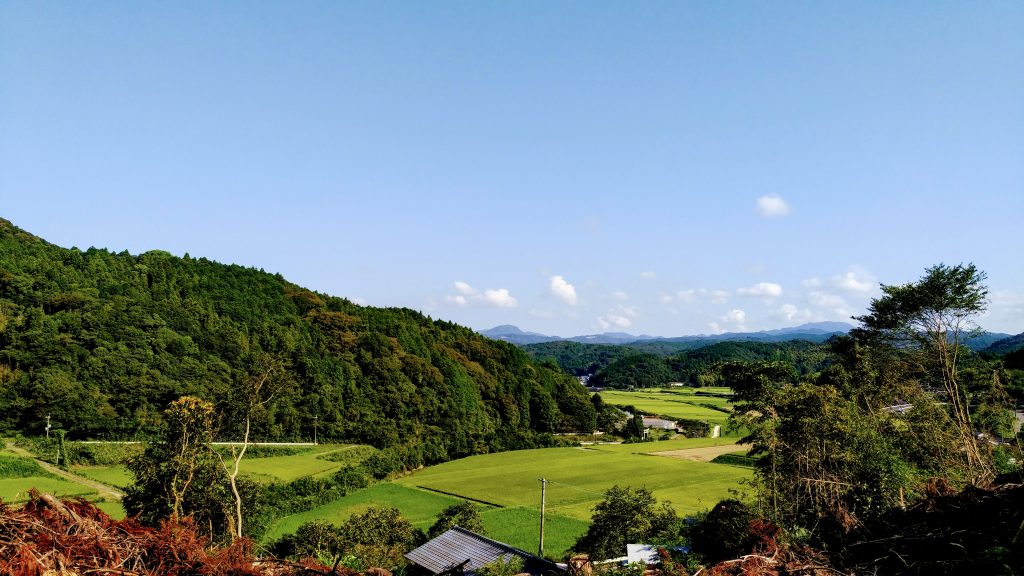
I hope that this short piece has inspired some of you to reflect upon your own long-term priorities and at least consider the potential option of exiting the proverbial rat race in the big city either to return to your roots or blaze a new path in the countryside where it is possible to enjoy life to its fullest at a somewhat slower pace. If you visit Oita and hear a tone-deaf person crowing “Country Roads” at the top of their lungs, it just maybe me! If you roll down your window and introduce yourself, I will look forward to the opportunity of telling you about my latest new favorite onsen just like a local!
For comments, please visit our Facebook page below:
Related Articles
Japan’s Maglev Train Project Faces Setbacks in Shizuoka
The President of JR Tokai, Shin Kaneko, has stated that it will be impossible for the maglev train to open by 2027 due to the ongoing issues in Shizuoka.
Major Japanese Retailers Step up Support for Ukrainian Refugees
Japanese corporations such as Don Quijote, Muji, and Uniqlo are behind major relief efforts to help displaced Ukrainian refugees.


